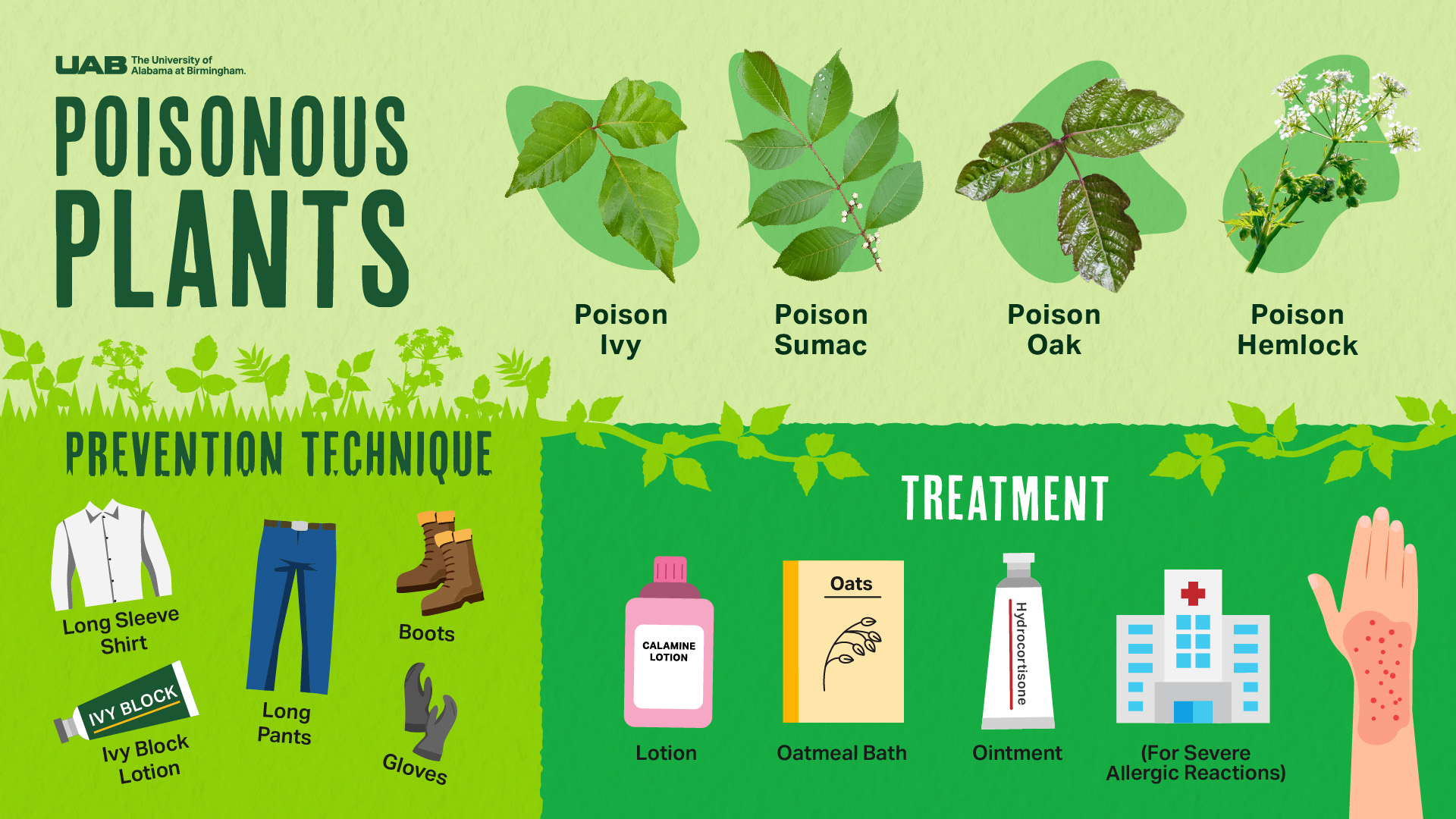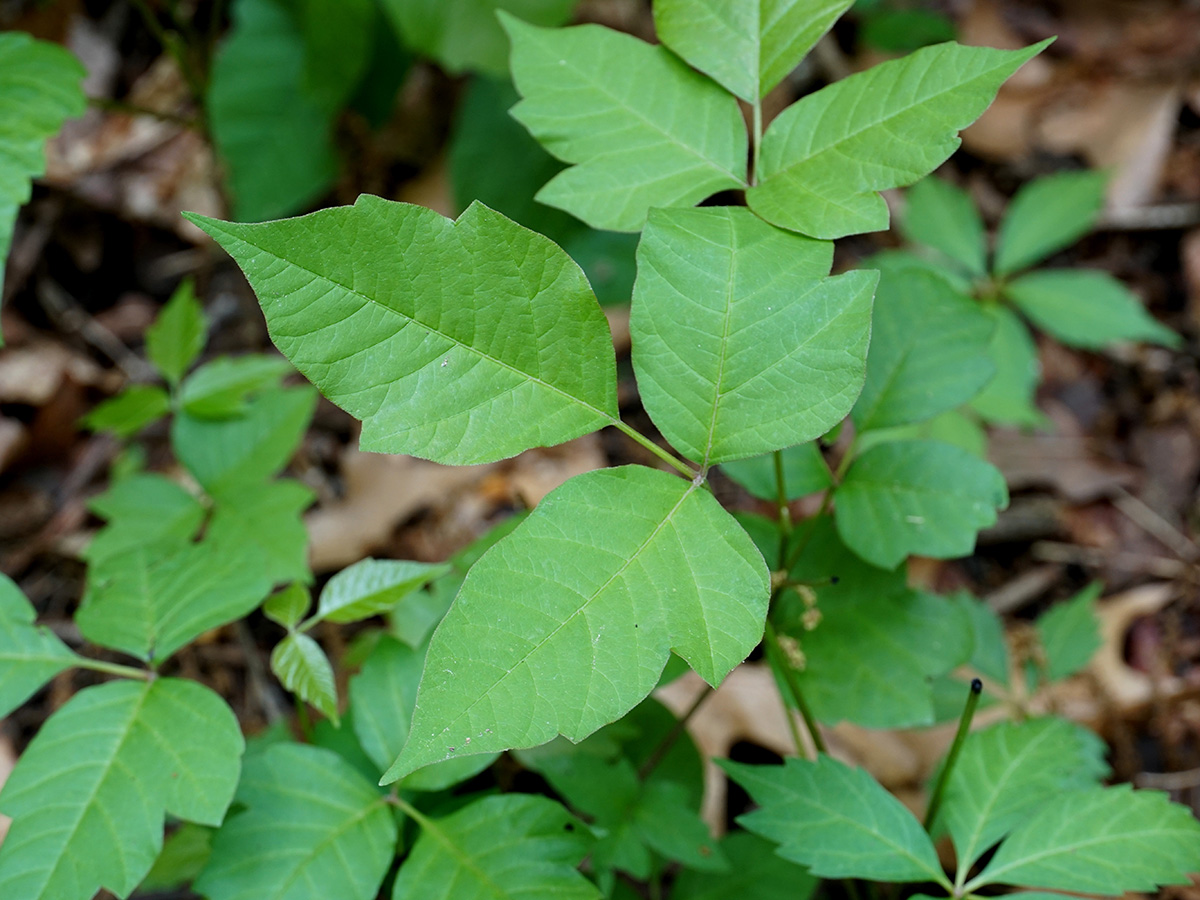
As temperatures rise, many people may start to spend more time outdoors. Experts at the University of Alabama at Birmingham say it is important to be able to identify, avoid and treat reactions from poisonous plants.
Stacy Marshall, M.D., assistant professor in the UAB Department of Emergency Medicine, shared how to prevent contact with poisonous plants, what to do if exposure occurs and how these reactions are treated.
Identification of most common poisonous plants
The three most common types of poisonous plants are poison ivy, poison oak and poison sumac.
Each of these plants produces a resin called urushiol. This colorless resin, which allows the plants to retain water, exists on their stems and leaves. The toxic effects of encountering this resin can begin to appear within hours or take as long as 24-48 hours to fully develop.
Recently, poison hemlock has begun spreading across North America. This plant is often confused with Queen Anne’s Lace or wild carrot, as it is a member of the carrot family. Poison hemlock has finely divided, fern-like leaves and clusters of small white flowers arranged in an umbrella-shaped pattern. Unlike the others, it does not cause skin irritation — it is toxic only upon ingestion, which can be extremely dangerous and potentially fatal. The plant emits a musty odor and can grow 6 to 10 feet tall, with distinctive purple spots on its smooth, hollow stems.
 UAB emergency medicine doctor discusses how to identify and treat exposure to common poisonous plants. Poison ivy typically grows as a climbing vine in shady, damp areas along the East Coast. Its leaves appear in clusters of three — a key identifier.
UAB emergency medicine doctor discusses how to identify and treat exposure to common poisonous plants. Poison ivy typically grows as a climbing vine in shady, damp areas along the East Coast. Its leaves appear in clusters of three — a key identifier.
Poison oak features three leaflets per cluster but tends to grow as a low shrub rather than a vine. It is more common on the West Coast and in parts of the South. The plant may produce greenish-yellow or white berries.
Poison sumac thrives in swampy or marsh-like areas, especially near rivers. It grows as a tall shrub or small tree and can reach heights over 15 feet. Its leaves are smooth-edged and arranged in pairs, with seven to 13 leaflets per stem.
Prevention of an allergic reaction
Contact with urushiol can lead to itchy, blistering rashes. Because the resin is present year-round, precautions should always be taken during outdoor activities.
To prevent contact with resin, Marshall recommends the following tips:
- Always wear protective clothing while gardening, doing yardwork or participating in outdoor activities.
- When outdoor activities are complete, immediately shower and wash clothing to avoid spreading the resin onto other things that could come in contact with one’s skin.
“The main cause of exposure to poison hemlock is misidentification,” Marshall said. “Because it is often confused with the wild carrot, poison hemlock is accidentally ingested. If you are not 100 percent sure of the type of plant you are encountering, avoid ingesting it or foraging it.”
Treatments for poisonous plant exposure
If poison ivy, poison oak or poison sumac is encountered, thoroughly wash the area with soap and water. If a mild skin rash forms, use a topical steroid cream, like hydrocortisone, available over the counter. For moderate to severe skin rashes, consult with a health care professional for a prescription steroid cream or oral steroid.
If poison hemlock has been ingested, seek immediate medical attention.